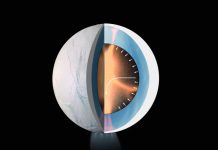The photoelectric effect involves an electron ejection from the photon of a material. However, the ETH researchers focused on the attosecond laser pulses. The attosecond laser pulses were used for the measurement of time evolution for the photoelectric effect in molecules. The researchers believe that this research inference could help them with deducing the exact location of a photoionisation event.
If the material has sufficient energy, then the photon striking it has the calibre to emit an electron from it. Albert Einstein formulated the theoretical explanation for the electron emission by a photon. This phenomenon came to be known as the photoelectric phenomenon. The description of the photoelectric event was crucial to the quantum mechanics development. The development of Quantum Mechanics felicitated Albert Einstein with the title of Nobel Prize in Physics in the year 1921.
An international team of physicists initiated the research. Urusula Kellar led the physicist team at the Institute of Quantum Electronics of the ETH Zurich. This team adds on a new dimension to the photoelectric effect investigational experiment. With the help of attosecond laser pulses, the physicist was in a position to measure the time difference between the electron ejection from the molecule concerning its position inside the molecule.
Jannie Vos says, “For quite some time, people have studied the time evolution of the photoelectric effect in atoms, but very little has so far been published on molecules.” Jannie Vos is the PhD student. The complex nature of the molecules is responsible for smaller contributions of the researchers towards time evolution of photoelectric effect in the molecules. The outermost electron revolves around the atomic nucleus and catapults out of its nuclear orbit. On the contrary, two or more nuclei within the molecule share the same electron. The location of electrons is dependent on the different interactive potentials interplay.
After this study, the ETH researchers are planning to observe the larger molecules closely. The research will start with the laughing gas namely N2O. Let us all wish the entire ETH researchers team a GOOD LUCK in their future endeavours.





